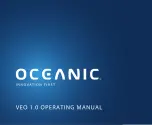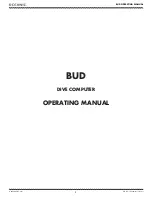
Concepts and Features
R&S
®
ZNB/ZNBT
129
User Manual 1173.9163.02 ─ 38
4.4.1 Limit Check
A limit line restricts the allowed range for some or all points of a trace, i.e. for a certain
range of stimulus values. Typically, limit lines are used to check whether a DUT con-
forms to the rated specifications (conformance testing).
●
An upper limit line defines the maximum allowed values for the related stimulus
range.
●
A lower limit line defines the minimum allowed values for the related stimulus
range.
●
A ripple limit defines the maximum difference between the largest and the smallest
response value for the related stimulus range. A ripple limit test is suitable e.g. to
check whether the passband ripple of a filter is within acceptable limits, irrespective
of the actual transmitted power in the passband.
●
A circle limit defines the acceptable values as a circular area within a complex dia-
gram.
A limit check consists of comparing the measurement results to the limit lines and dis-
play a pass/fail indication. An acoustic warning and a TTL signal at the USER PORT
on the rear panel (for test automation) can be generated in addition if a limit is violated.
Upper and lower limit lines are both defined as a combination of segments with a linear
dependence between the measured quantity and the sweep variable (stimulus vari-
able). Similar to this segmentation, ripple limits may be defined in several ranges. The
limit lines (except circle limits) can be stored to a file and recalled. Data or memory
traces can be used to define the segments of an upper or lower limit line. Moreover it is
possible to modify the upper and lower limit lines globally by adding an offset to the
stimulus or response values.
4.4.1.1
Rules for Limit Line Definition
The analyzer places very few restrictions on the definition of limit line segments.
The following rules ensure a maximum of flexibility:
●
Segments do not have to be sorted in ascending or descending order (e.g. the
"Start Stimulus" value of segment no. n doesn't have to be smaller than the "Start
Stimulus" value of segment no. n+1).
●
Overlapping segments are allowed. The limit check in the overlapping area is rela-
ted to the tighter limit (the pass test involves a logical AND operation).
●
Gaps between segments are allowed and equivalent to switching off an intermedi-
ate limit line segment.
●
Limit lines can be partially or entirely outside the sweep range, however, the limits
are only checked at the measurement points.
The following figure shows a limit line consisting of 3 upper and 2 lower limit line seg-
ments. To pass the limit check, the trace must be confined to the shaded area.
Operations on Traces
















































